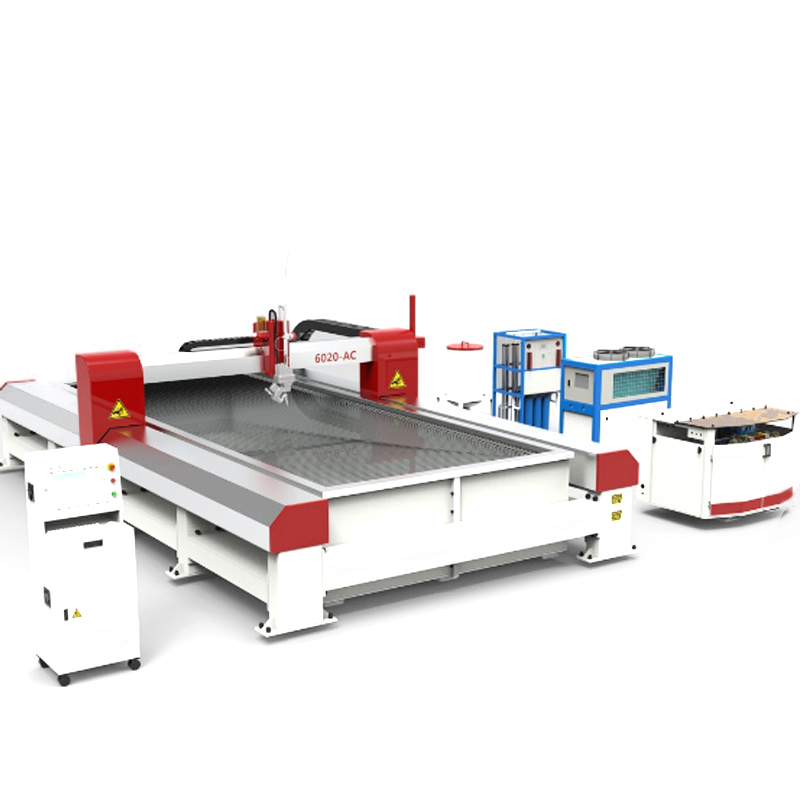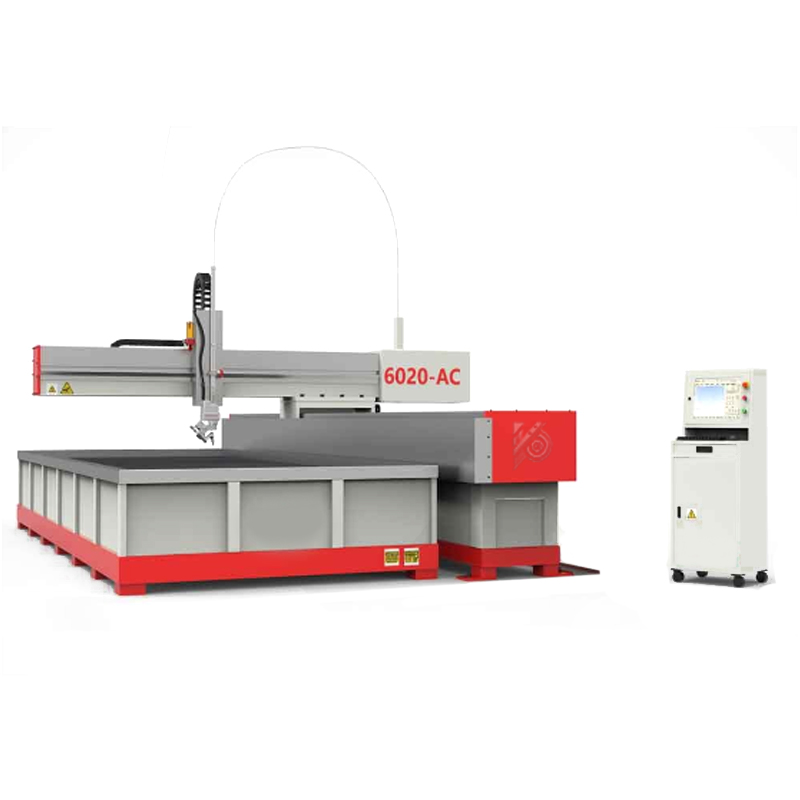Industry-news
What Are the Styles of Abrasive Waterjet Cutting? What Are the Differences and Advantages of Each?
What Are the Styles of Abrasive Waterjet Cutting? What Are the Differences and Advantages of Each?

Abrasive waterjet cutting is one of the most versatile and precise cutting technologies available today. By combining high-pressure water with abrasive materials, this method allows for cutting through a wide variety of materials—ranging from metals and ceramics to plastics and composites. There are different styles of abrasive waterjet cutting, each with unique advantages, depending on the materials, complexity, and specific requirements of the job. Understanding these styles and their differences can help businesses choose the best option for their production needs.
In this article, we will explore the main styles of abrasive waterjet cutting, highlight their key differences, and discuss the advantages each style brings to the table.
1. 2D Abrasive Waterjet Cutting
Style Overview:
2D abrasive waterjet cutting refers to the cutting process where the Waterjet Machine moves in a two-dimensional plane (X and Y axes). This style is used primarily for cutting flat materials, such as sheets of metal, stone, glass, and plastics, into precise shapes.
-
Materials: Metals (steel, aluminum, titanium), plastics, rubber, stone, glass, ceramics.
-
Advantages:
- High Precision: Ideal for producing detailed 2D shapes and contours with clean, smooth edges.
- No Heat Distortion: Since the process uses only water and abrasives, it avoids the thermal effects seen with laser or plasma cutting, preserving material integrity.
- Versatility: Works on a wide range of materials, from soft plastics to hard metals and composites.
- Minimal Material Waste: The waterjet cutting process minimizes waste due to its precision and tight tolerances.
-
Best Suited For: Flat parts with simple designs such as gaskets, plates, and panel cuts.
2. 3D Abrasive Waterjet Cutting
Style Overview:
3D abrasive waterjet cutting involves the machine moving along three axes (X, Y, and Z), allowing for the cutting of three-dimensional shapes. This style of cutting is ideal for more complex geometries, such as curved surfaces, intricate contours, and deep cuts.
-
Materials: Metals, composites, ceramics, plastics, foam, rubber, and stone.
-
Advantages:
- Complex Cutting: The ability to cut curved or beveled shapes with high precision and intricate detail.
- Multi-Dimensional Cuts: Allows for deeper cuts and the ability to cut through thick materials without losing accuracy.
- Increased Flexibility: Suitable for parts with varying thicknesses, heights, or intricate geometries that need detailed 3D cutting.
- Ideal for Prototyping: 3D cutting is often used in the prototyping stage where parts need to be cut with a high degree of precision but also flexibility.
-
Best Suited For: Cutting parts with complex geometries, like aerospace components, automotive parts, and molds with non-flat surfaces.
3. 5-Axis Abrasive Waterjet Cutting
Style Overview:
The 5-axis abrasive waterjet cutting machine expands on the capabilities of the 3D style by adding two rotational axes (A and B) to the cutting head. This enables the machine to cut at multiple angles, even when working with highly complex parts. The 5-axis system allows for tilted or angled cuts that would be difficult or impossible with 2D or 3D machines alone.
-
Materials: All materials suitable for abrasive waterjet cutting (metals, plastics, composites, stone, etc.).
-
Advantages:
- Extreme Precision: High level of accuracy even on parts with complex angles or intricate shapes.
- Angled Cuts: Capable of cutting parts at any angle, allowing for angled bevels, chamfers, and precise intersections.
- Ability to Cut in Tight Spaces: The machine's versatility in positioning makes it ideal for working in confined areas or parts with tight tolerances.
- High Flexibility: Ideal for industries like aerospace, automotive, and medical where complex components with multiple angles are required.
-
Best Suited For: Complex parts with varying angles, such as aerospace turbine blades, automotive parts, and medical devices.
4. Dynamic Cutting (Continuous Contour Cutting)
Style Overview:
Dynamic cutting involves continuous contour cutting that adapts to the shape of the material, allowing for curved cuts that follow the natural path of the design. The cutting head continuously adjusts to the material's surface during the cutting process, ensuring smooth and even cuts.
-
Materials: Metals, composites, plastics, and foam.
-
Advantages:
- Highly Accurate Cuts: Allows for dynamic adjustment to follow curves, arcs, or other complex shapes in real-time.
- Faster Cutting: Can speed up the cutting process by adjusting the path dynamically rather than relying on pre-programmed cutting paths.
- Improved Edge Quality: By following the contours of the material, the machine ensures smooth, clean edges.
- Less Material Stress: No mechanical pressure is applied to the material, reducing the risk of deformation or stress fractures.
-
Best Suited For: Cutting curved or non-linear shapes for industries like automotive, aerospace, and design/architecture where precise and smooth curves are necessary.
5. Bevel Cutting (Angled Waterjet Cutting)
Style Overview:
Bevel cutting is a technique used to create angled cuts along the edge of a material, often used for parts that require a sloped or beveled edge. This can be especially useful in applications that need to join materials at an angle, such as welding or assembling components.
-
Materials: Metals, plastics, composites, and more.
-
Advantages:
- Precise Angled Cuts: Allows for highly precise beveled edges, essential for industries like metalworking, fabrication, and construction.
- No Heat Affected Zone: Unlike traditional methods like plasma or laser cutting, abrasive waterjet cutting leaves no heat-affected zone (HAZ), maintaining material integrity.
- Wide Range of Angles: Bevel cuts can be done at any angle, providing flexibility for various assembly and joining needs.
-
Best Suited For: Cutting angled edges for metal fabrication, welding preparation, and part assembly in the construction, automotive, and industrial machinery sectors.
Conclusion: Choosing the Right Abrasive Waterjet Cutting Style
Each style of abrasive waterjet cutting—whether 2D, 3D, 5-axis, dynamic, or bevel cutting—offers unique advantages tailored to specific applications. The choice of which style to use depends on the material being cut, the complexity of the design, and the precision required for the project.
- 2D Cutting is ideal for flat shapes with straightforward designs.
- 3D Cutting is better for more complex, multi-dimensional parts.
- 5-Axis Cutting excels in cutting parts with multiple angles and intricate geometries.
- Dynamic Cutting provides flexibility for curved and highly accurate cuts.
- Bevel Cutting is best for angled edges in fabrication and assembly.
Regardless of which style you choose, abrasive waterjet cutting offers high precision, clean edges, and the ability to cut a wide range of materials without the drawbacks of heat distortion, making it an invaluable tool for industries such as aerospace, automotive, construction, and metal fabrication.
Understanding the differences and advantages of each style helps businesses select the right technology for their specific cutting needs, ensuring the best possible results and optimal efficiency for their production processes.
If you need more details and interesting in it,please contact us!






